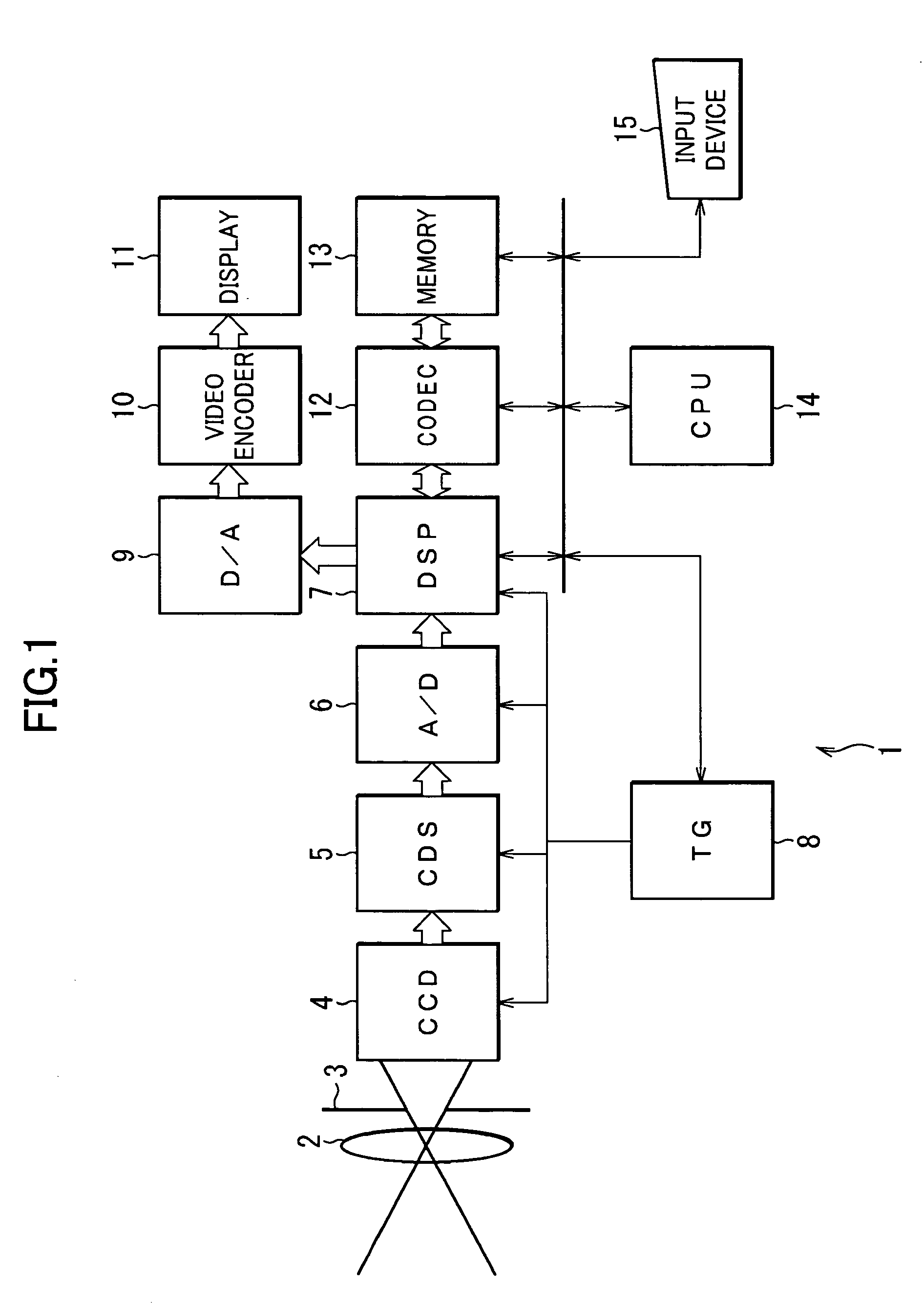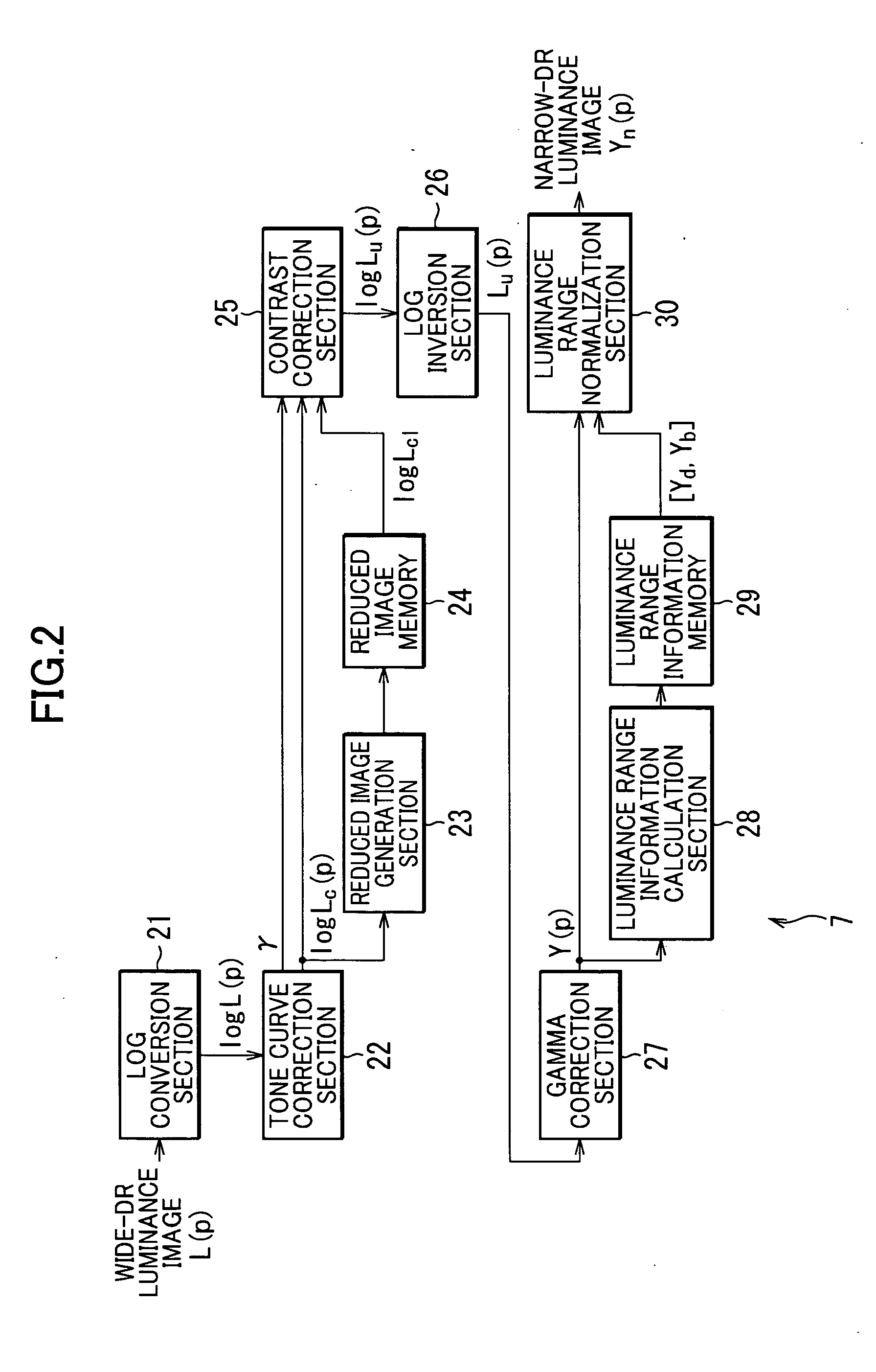Image processing device and method
a technology of image processing and image, applied in the field of image processing apparatus and a method, can solve the problems of reducing the luminance variation of the image as a whole, the range of supportable luminance grayscales the apparatus is not yet widened, so as to achieve the effect of reducing the load of calculation, small memory capacity consumption, and easy hardware construction
- Summary
- Abstract
- Description
- Claims
- Application Information
AI Technical Summary
Benefits of technology
Problems solved by technology
Method used
Image
Examples
Embodiment Construction
[0107] A digital video camera as one embodiment of the present invention will be explained below referring to the attached drawings.
[0108]FIG. 1 shows an exemplary configuration of a digital video camera as one embodiment of the present invention. The digital video camera 1 takes a picture of a subject, generates a wide-DR image having a dynamic range of pixel values wider than a general one, saves the image into a predetermined storage medium, and outputs the wide-DR image after converting it into a narrow-DR image having a dynamic range of pixel values narrower than a general one, to a built-in display also used as a composition-determining finder or as an image monitor, or to external apparatuses.
[0109] The digital video camera 1 is roughly constructed from an optical system, a signal processing system, a recording system, a display system and a control system.
[0110] The optical system is constructed from a lens 2 for condensing a photo-image of a subject, a stop 3 for regulat...
PUM
 Login to View More
Login to View More Abstract
Description
Claims
Application Information
 Login to View More
Login to View More - R&D
- Intellectual Property
- Life Sciences
- Materials
- Tech Scout
- Unparalleled Data Quality
- Higher Quality Content
- 60% Fewer Hallucinations
Browse by: Latest US Patents, China's latest patents, Technical Efficacy Thesaurus, Application Domain, Technology Topic, Popular Technical Reports.
© 2025 PatSnap. All rights reserved.Legal|Privacy policy|Modern Slavery Act Transparency Statement|Sitemap|About US| Contact US: help@patsnap.com



